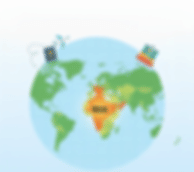
Featured

New Year Trip 2026 : Best International Getaways Within 5 Hours From India
Tavleen Kaur - November 27, 2025

Visa-Free Countries for Indians in 2025-2026: Plan a Trip Without Hassle
Tavleen Kaur - October 22, 2025

Complete Guide to Tết Festival 2026: Vietnam’s Lunar New Year Celebration
Adrija Das - October 16, 2025

14 Best Countries to Visit in December from India: Everything You Need to Know
Tavleen Kaur - October 03, 2025

Best Places to Spend Christmas in Europe 2025
Tavleen Kaur - November 25, 2024

7 Christmas Secrets from 7 Countries: Christmas Traditions Around the World
Shefali Ganesh - June 09, 2023
Latest Articles

Shopping in France Guide: Paris Luxury, Vintage Markets & Best Cities
Adrija Das - December 26, 2025

Top 11 Places to Visit in Bali in January for Couples & Honeymooners.
Tavleen Kaur - December 26, 2025

Best Hotels & Villas for Your Bali Honeymoon Packages
Tavleen Kaur - December 26, 2025

5-Day Paris Itinerary: Complete Travel Guide to Attractions, Food & Hidden ...
Adrija Das - December 26, 2025

13 Hidden Gems in France You’ve Never Heard Of
Anvie Shrivastava - December 26, 2025

Notre-Dame de Paris: Restoration Updates, Visiting Rules & Traveller Tips
Anvie Shrivastava - December 26, 2025

Best Guided Walking Tours in Paris: Food, History & Hidden Neighbourhood Tr...
Anvie Shrivastava - December 26, 2025

Paris Trip from Delhi: Complete Travel Guide for Indians
Anvie Shrivastava - December 26, 2025

Paris Christmas Markets: Dates, Best Markets, Itineraries & Planning Guide
Anvie Shrivastava - December 26, 2025

Paris in Winter: Christmas Lights, Weather, Cosy Cafés & Magical Experience...
Bhumika - December 26, 2025

Best Budget Hotels in Paris City Centre – Affordable Stays Near Top Attractions
Bhumika - December 23, 2025

Top Luxury Hotels in Paris: Best 5-Star Stays for Elegance & Iconic Experie...
Bhumika - December 23, 2025
